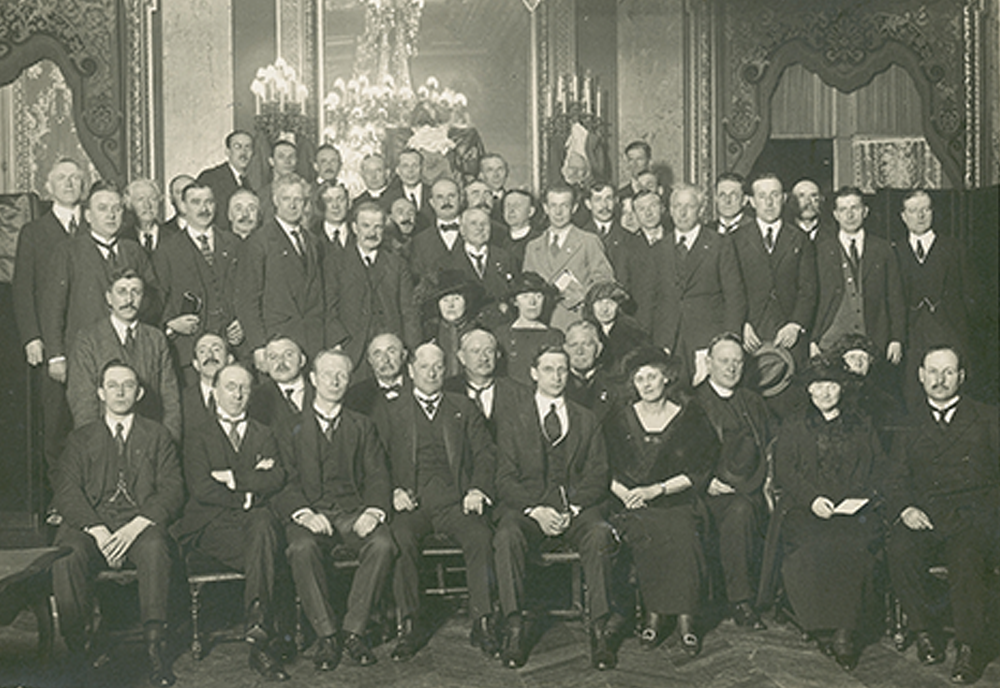1922
The Irish Race Conference of 1922
The Irish Race Conference met in Paris on 24 January 1922. It was designed to showcase the unity and purpose of the nationalist movement, and to establish a standing body to link the diaspora to Ireland.
During the War of Independence, Irish communities around the world had formed Irish Self Determination Leagues to campaign for recognition of the Irish Republic and to support the fight at home. The question of how to link them arose.

The idea of holding a conference was first proposed by the Irish Self Determination League in South Africa in 1921.
Organisation of the conference was taken over by the Dáil administration, and Dublin was chosen as the venue. Delegates were invited from North America, Australia, New Zealand, Britain, South Africa and Argentina. It was the first gathering of the diaspora to be held on such a scale.
The conference was switched to Paris at the last minute, to avoid interference by the British authorities in Ireland, despite the ongoing negotiations in London.
But as delegates packed their bags, the nationalist movement was splitting over the terms of the Anglo-Irish Treaty. Separate pro- and anti-Treaty delegations travelled from Dublin, while no one made the journey from the United States or Canada.
The atmosphere was tense as delegates gathered for the opening session.
It was agreed that the conference would create a world body to coordinate activities of the diaspora, to be called Fine Gaedheal (‘family of the Gael’). This new body was intended to promote Irish culture and sport, look after the welfare of Irish communities abroad, and foster economic cooperation between the diaspora and Ireland.
It was an ambitious idea, but questions were asked about who should be in charge – should the diaspora take the lead or take its cue from the Irish at home?
There was no consensus on this question.
Matters were further complicated by the unfolding split over the Treaty, with both pro- and anti- camps manoeuvring to control the agenda.
The atmosphere at the conference soured, and plans for a world organisation came to nothing.
A family photo of conference delegates captures a moment in time before the divisions of the Civil War took hold. It was the last time many would be photographed together.
If plans for a world body for the diaspora failed, the idea of engaging with the global Irish family did not.
Some of the spirit of the race conference survived to form the basis for the Tailteann Games, a gathering of Irish athletes from around the world held in Dublin in 1924.
Efforts were made to communicate with Irish communities abroad through wireless and pathé broadcasts, and visits by government figures.
And the choice of Washington as the location for the Irish Free State’s first diplomatic mission abroad, followed by consulates in New York and Boston, was determined by a desire to engage with Irish America.
Gerard Keown


